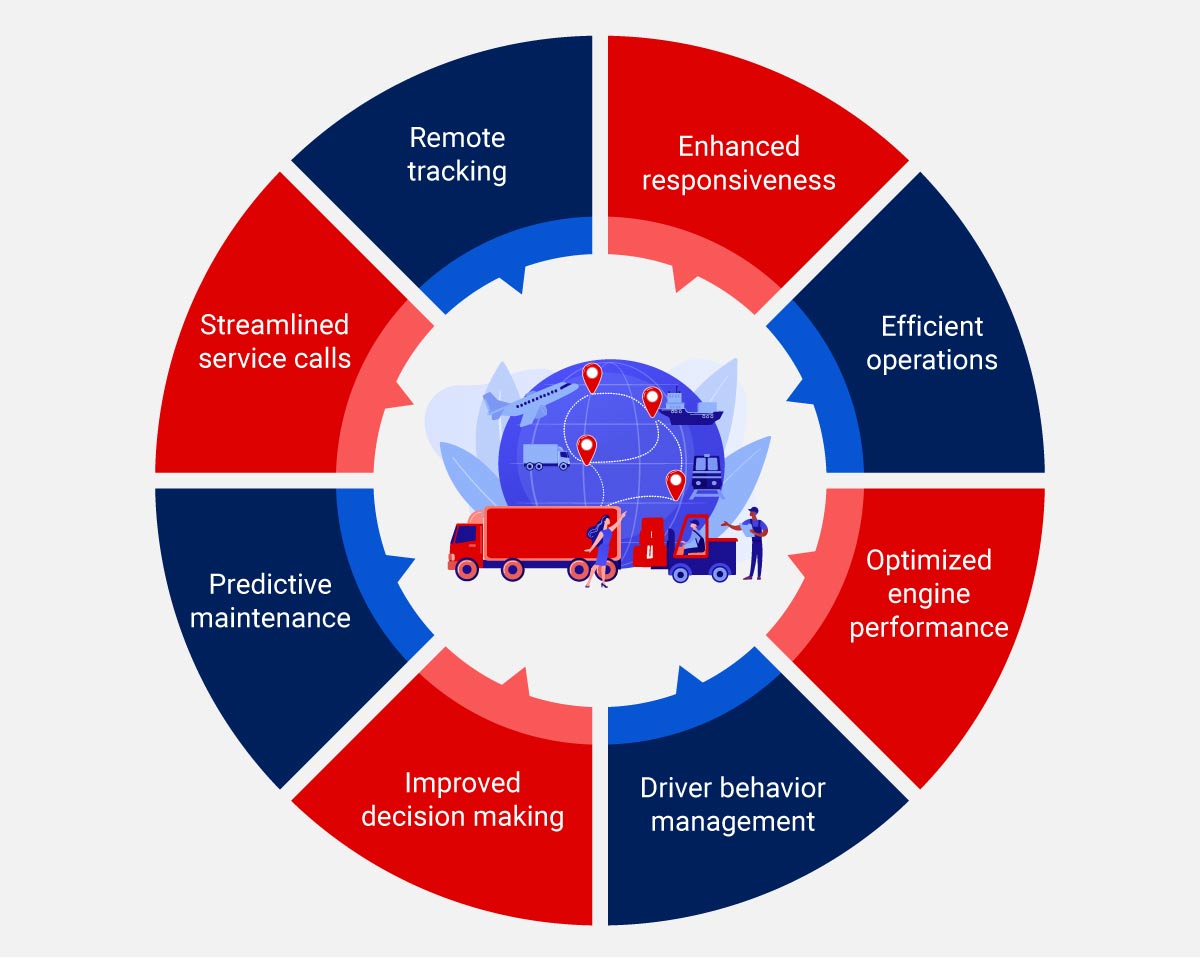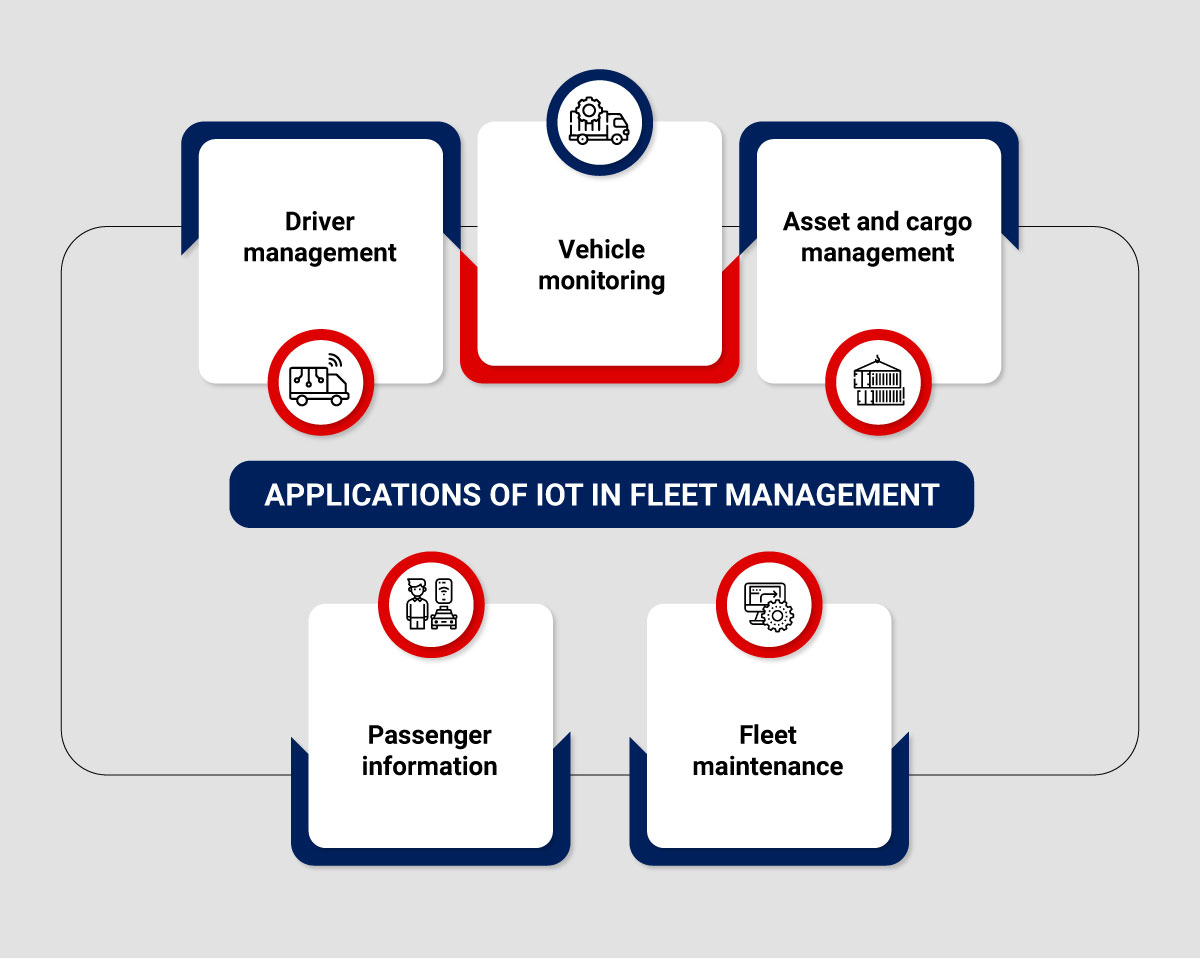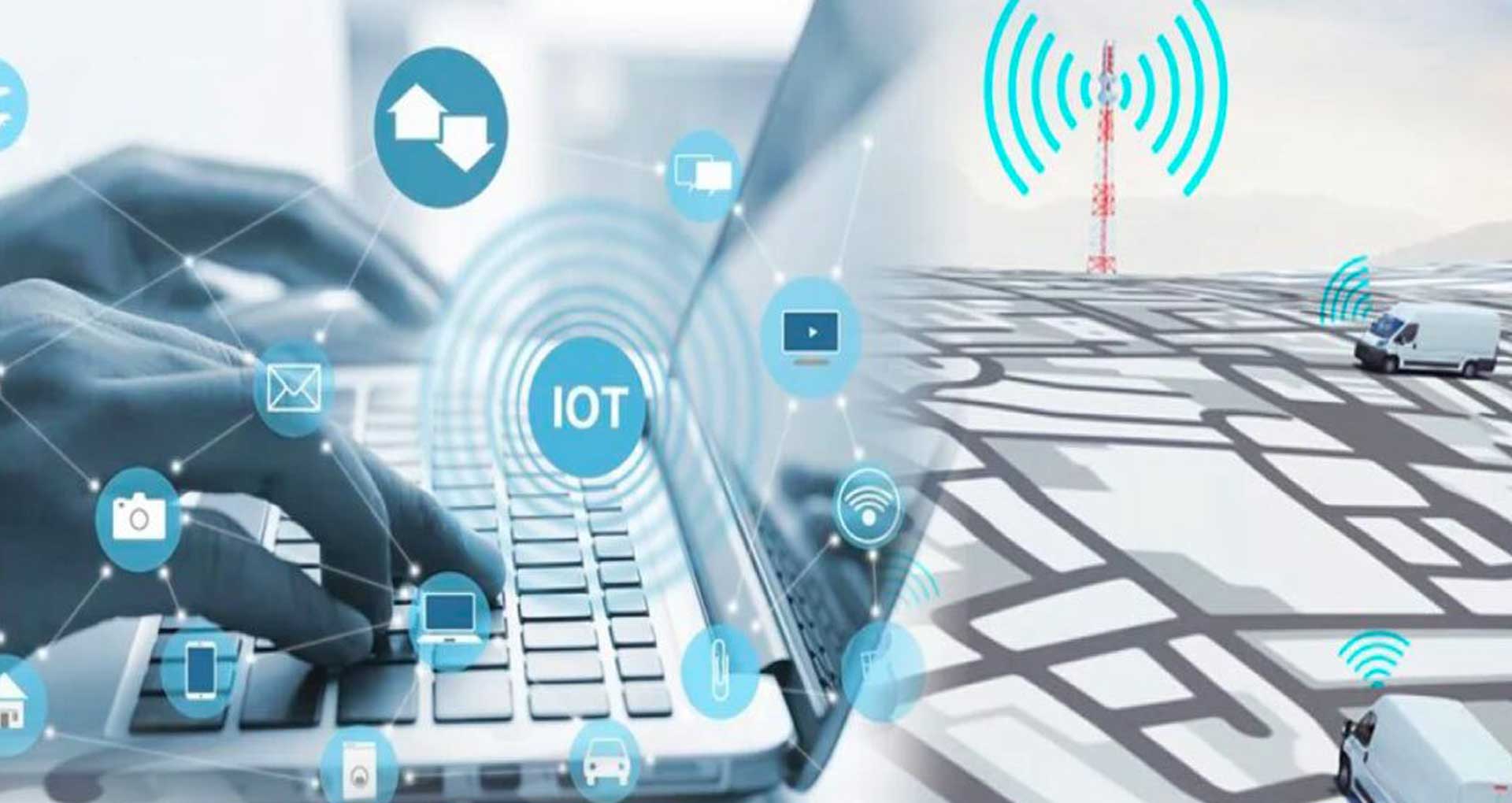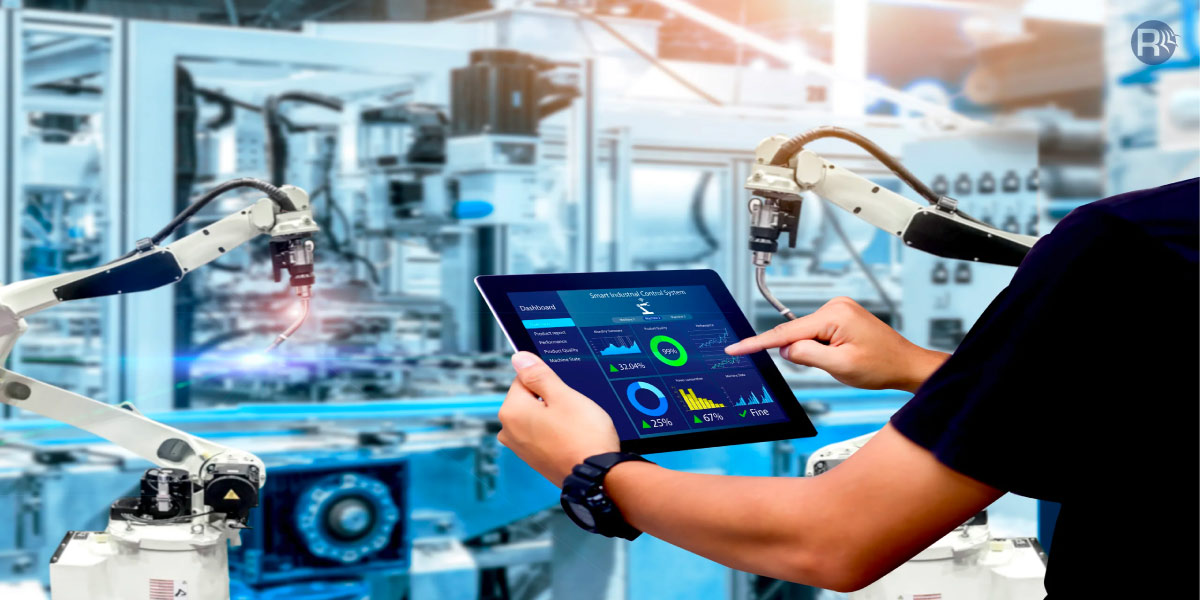Fleet managers spend a significant chunk of their time, effort & resources in managing vehicles effectively. It is while ensuring they meet the efficiency, safety, and performance standards. Though today, most of them are leveraging the benefits of the Internet of Things (IoT) to lower ownership costs, fuel consumption, fleet maintenance, and analyze performance. It is one of the fastest-growing technological trends that offer the world the advantage of leveraging connected infrastructure.
Through this blog, we will provide a detailed rundown of what comprises IoT-based fleet management. It would cover IoT applications’ use cases and benefits in fleet management. And how you can leverage IoT capabilities to automate processes, optimize costs & improve decision-making. So let’s get started!
How IoT in a Fleet Management System Works?
An IoT fleet tracking system uses a combination of Global Positioning System (GPS) technology and internet connectivity to track the location and status of vehicles in a fleet. GPS devices, often in small, portable units, are installed in each vehicle and transmit their location data to a central server. Fleet managers can then access and analyze this data using a web-based application or mobile app. The system can also gather and transmit other data, such as vehicle speed, fuel consumption, and maintenance status. Additionally, the system can often be integrated with other technologies, such as cameras and sensors, to provide even more information about fleet operations.
Potential of IoT in Fleet Management
According to Valuates Reports;
- Global IoT in Fleet Management is projected to reach US$ 32430 million by 2028 at a CAGR of 21.0% during 2023 and 2028
- North America is expected to hold the largest IoT Fleet Management Market share (about 35% during the forecast period)
Benefits of Using an IoT-based Fleet Management System

IoT is expanding the possibilities of intelligent fleet management with connected vehicles. The technology connects telecommunication with informatics to capture and circulate actionable data between drivers and dispatchers in real-time. Listed below are the core benefits of IoT for fleet management;
- Remote tracking of fleet vehicles and assets: IoT and telematics allow fleet operators to track vehicle location and asset movement constantly. It is highly beneficial for ensuring the safety of drivers and cargo along with timely deliveries.
- Automated notifications for enhanced responsiveness: Smart fleet management software help automate notifications to all connected vehicles. It would include alerts in case of weather-related disruptions or traffic congestion. Further, smart vehicles can notify nearby service stations in case of unexpected engine failure or accidents.
- Efficient operations: IoT creates a well-connected ecosystem where data flows seamlessly and can be accessed anytime, anywhere. It helps connect disparate technologies such as big data, cloud, analytics, and more. With a centralized view of fleet operations data, it becomes much easier to conduct performance evaluations and make informed decisions quickly.
- Optimized engine performance & fuel efficiency: IoT-enabled trucks and digital tachographs offer accurate reporting. It would include the vehicle’s total distance covered with idling time and average speed. This information aids route optimization while reducing fuel consumption & extends the service life of vehicles.
- Improved decision making with big data analytics: Data trumps all! IoT-enabled smart fleet tracking solutions support a robust analysis of routes, driving patterns, delivery times, and relevant insights. It helps freight and transport business owners optimize enterprise-wide functions and resources while ensuring the safety of fleet vehicles, drivers and support crew.
- Predictive maintenance: Smart trucks are installed with an Onboard Diagnostics (OBD) Port which works in sync with IoT-powered connected devices to generate actionable reports. IoT-based predictive maintenance systems help fleet managers remotely procure vital data about the engine’s performance and receive early malfunction warnings. The latest version – OBD-II, also supports predictive maintenance of vehicles to avert unexpected failures and costly downtime.
- Streamlined service calls: Equipped with actionable insights through IoT; technicians can be better prepared with the right tools and replacements and solve the issues on time. Employees can improve first-time fix rates (FTFR), speed up repairs & reduce unplanned downtime – all of which are significant benefits in fleet management.
IoT Fleet Management Use Cases

Having an IoT-Powered device means fast and reliable connectivity with a single powerful gateway. Below are some use cases of how it can help fleet operations.
- Driver management: High-end driver management systems enabled with backup cameras and blind-spot assistant alert drivers. It is about the objects blocking the way, people crossing the road, or rash vehicles driving. Moreover, the in-cabin cameras help alert and recommend drivers to stop and rest. And, in case of an accident, the video data can detect a fault.
Driver management solutions powered by computer vision can support monitoring drivers for distraction and tiredness. Such applications can notify the nearest control operation center of the driver’s condition in real-time. - Fleet maintenance: The vehicle’s in-built sensors detect when to change the oil, brake pads, or battery, or rotate tires. They help the crew to address any issue well in time. Further, it reduces costs by detecting & preventing damaged motors, dead and old batteries, dysfunctional brakes & less tractable tires.
A predictive maintenance platform can run multiple workloads while enabling access to sensors, cameras and other devices. Fleet managers can seamlessly deploy applications to reduce service costs by converging workloads. This maintenance exercise helps to improve fuel efficiency and lower costs. Further, the data gathered from the fleet is stored in a cloud application. The data is then processed through different analytics while conceptualizing it into a visual format. It enables fleet operators to easily access the data to monitor various parameters associated with their vehicles. - Vehicle monitoring: Vehicles integrated with IoT and in-built sensors provide a clear view of the surroundings. They detect moving people, objects, and other vehicles. And such systems work as a driving coach – they alert the driver & prevent accidents.
- Asset and cargo management: IoT and telematics play a significant role in supply chain and logistics. The embedded sensors help transportation companies with cargo security. It includes constant temperature control, surveillance & vibration sensors. Further, IoT helps keep the vehicle’s cargo intact. They set temperature standards and maintain those food items, medications, vaccines, and other perishable items stay fresh and consumable.
The cargo surveillance helps assess the inside and outside of the vehicle. They enable operators to ensure what should be on the truck and in what order. And this monitoring confirms if any cargo is lost or stolen. The vibration sensors maintain the security of fragile goods and ensure they won’t break during transportation. - Passenger information: IoT integration in public transport vehicles helps passengers get real-time information about services, fares, and routes to passengers. They can also be notified about rules and equipped with value-add services like WiFi connectivity, paperless ticketing and online payment processing. Video cameras can help bus operators to collect data about passengers, defaulters and other applicable regulations.
Technologies Used in IoT Fleet Management Software
IoT leverages a specific tech stack for digitalizing fleet management operations. It eliminates paperwork, logbooks and the need to switch between disparate systems and software platforms to perform routine functions. IoT in the fleet management industry runs on four essential technologies listed below:
Global Positioning System (GPS)
GPS enables easy access to actionable data on connected vehicles in real-time for remote monitoring and managing of vehicles and assets
On Board Diagnostics
This automotive electronic system has self-diagnosis and reporting capabilities. Installed inside a vehicle, it analyzes engine performance & repair needs.
Radiofrequency Identification System (RFID) Sensors
This robotic technology uses radio waves to identify & track objects that are embedded with tags in real time.
Bluetooth Low Energy (BLE) Beacons
These hardware transmitters broadcast their identifier to portable electronic devices. The technology enables the smartphone to automate push notifications and prompt actions when close to a beacon.
Telematics technology supports many devices – from temperature sensors to video cameras to portable electronic recording devices. These devices connect wirelessly to the vehicle to monitor its location, movement, speed, performance & condition.
How Rishabh Can Help You Revolutionize Fleet Management
Fleet management companies not leveraging telematics are missing out on opportunities to cut costs, optimize vehicle use and make their operations more efficient. IoT technology’s benefits to fleet owners cannot be overstated: no drivers stranded en route, no urgent need for a technician, no missed deliveries, no engine failures, and no hefty penalties!
As an experienced IoT software development company, we help you build fleet- management-focused solutions that cater to your unique business needs. Whether you want to stay compliant, cut costs, increase driver efficiency or track your cargo.
Success Story: ELD Fleet Management Mobile App Development
After realizing the proven process efficiency of integrating IoT, a US-based logistics development company turned to Rishabh to develop a fleet management solution for their operations. They wanted to eliminate paper logs with accurate and reliable digital records of duty status (RODS) for all commercial drivers. It would ensure compliance with US federal regulations. We developed a cross-platform fleet management mobile app by using Xamarin. It allows fleet owners & operators to monitor, manage driver logs and conduct vehicle inspections.
Value Delivered;
- 100% automation of driver vehicle inspection reporting (DVIR)
- 2x optimization of fleet & driver efficiency
- 62% increase in overall fleet profitability with insight into vehicle & driver performance
Give this case a read, if you wish to learn more about how we helped leverage IoT capabilities to support fleet operations.
Final Words
Today, IoT fleet management software has become indispensable. Fleet managers and business owners feel more confident with an IoT-powered solution that enables them to do their jobs efficiently. And, as technology advances, the features it offers go way beyond its intended scope. However, you would require a professional IoT consulting firm like Rishabh Software to build a reliable IoT solution. If you are looking for a technology partner or want to leverage our IoT talent to help you create your custom fleet solution, we can help.










 30 Min
30 Min


